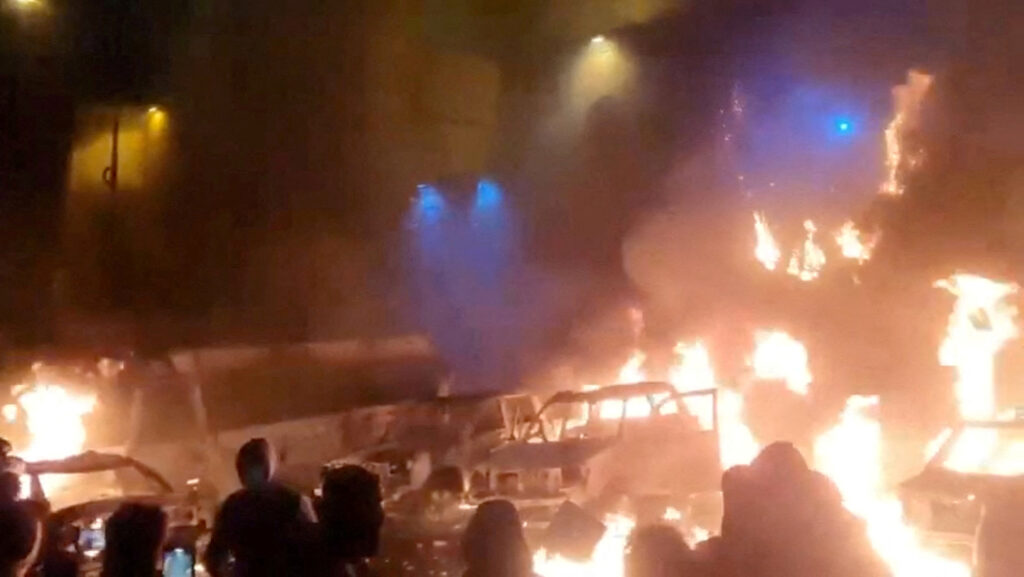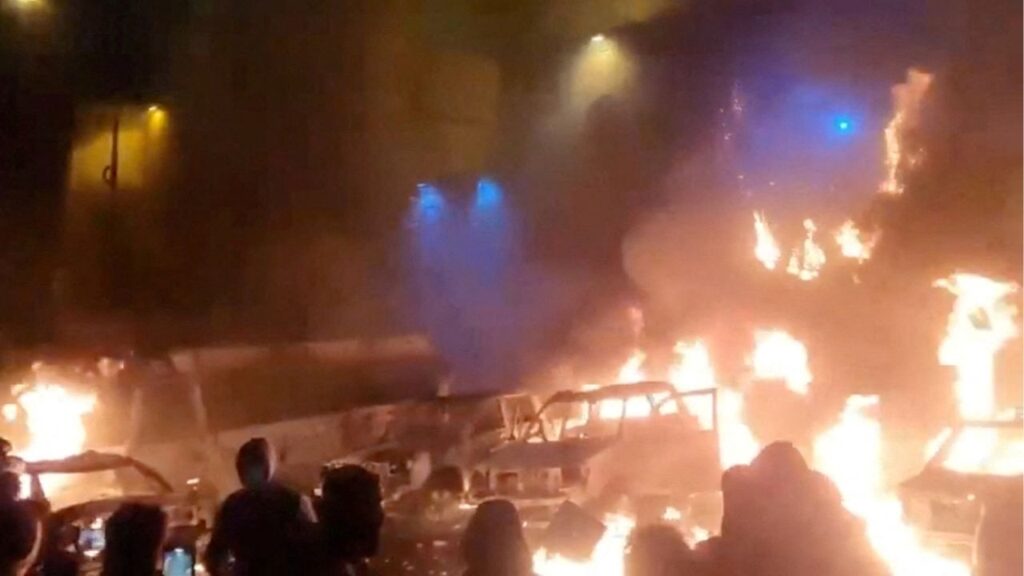Fresno Unified's Designated Schools program included 40 of the district’s 67 elementary schools and one middle school. The district has axed the nearly $30 million-a-year effort to improve student learning. (Shutterstock)

- FUSD and its teachers union reached an agreement in mid-June to attempt to mitigate the impacts of a long-standing program ending.
- The multimillion-dollar program was touted by the district as a way to close gaps between student groups less than three years ago.
- Finances, inconsistent program implementation and varied results are some of the reasons the district says the program was eliminated.
Share
|
Getting your Trinity Audio player ready...
|
This story was originally published by EdSource. Sign up for their daily newsletter.
The Fresno Unified School District and its teachers union have reached an agreement to terminate a decade-old, once-promising student improvement program that expanded from a pilot in a handful of low-performing schools to 40 of the district’s 67 elementary schools and one middle school.

Lasherica Thornton
EdSource
Faced with rising program costs, declining enrollment and cuts in revenue, the district decided that inconsistent results could not justify the program’s high expense of almost $30 million.
“When you have finances crash with programmatic inconsistencies … just kind of created the perfect storm for us to go a different direction,” said David Chavez, district chief of human resources, who also worked for two former superintendents.
The Designated Schools program, which operated under three superintendents, was a district initiative to improve achievement through additional daily instruction by targeting the specific needs of students. The effort was extensive: 30 additional instructional minutes per day for students, 10 extra paid days of professional development for teachers, and either a math or reading coach in each school.
Under the agreement with the Fresno Teachers Association, the coaches will return to the classroom as regular teachers, and teachers will see a phaseout of their 10-day training over the next few years. For students, aside from losing 30 minutes of instruction, there will be no transition. They can participate in the after-school program they are already entitled to attend, where they may receive intervention or instruction from teachers who choose to participate.
Dismantling the previously praised program raises questions about how and why it went awry.
The district blames inconsistent program implementation across schools, but it failed to set standards or hold schools accountable to the program’s tenets.
(Read this story complete with charts of student achievement levels at this link.)
Going Deeper: Who Designated Schools Served
Designated Schools, affecting 24,000 students and over 1,250 educators across 41 campuses, were intended to close academic gaps among students and were typically located in neighborhoods with large numbers of socioeconomically disadvantaged students. In the extra 30 minutes, all students received additional instruction or intervention in some way.
Reading specialists at Wilson Elementary, a Designated School, used those extra minutes on remedial instruction for struggling fifth graders who were unable to read even at a third or fourth grade level, said Drew Colburn, a fifth grade teacher.
During intervention time, Colburn and other teachers divided their classes into small groups by proficiency level and targeted students’ weak points, allowing all students to get additional support, without missing core instruction.
At Wilson, following slight improvements, 18.6% and 12.1% of students achieved reading and math proficiency in the 2023-24 school year, according to Ed-Data.
Teachers say they saw improvements, which may not have been as apparent on summative state tests that the district evaluated to determine program effectiveness.
“If you take that 30 minutes away from them, they’re going to come to fifth grade with even more of a deficit,” Colburn said.
Inconsistent Implementation or Lack of Oversight?
The first “Designated Schools” were actually three of the district’s lowest-performing schools. Fresno Unified gave teachers more time to plan, additional instruction time with students and extra support as part of the state’s turnaround model to reform persistently low-achieving schools.
The schools started to see improved student performance, including double-digit gains in some instances, according to district Superintendent Misty Her.
“We thought, ‘Can we take what happened there and now replicate it into other schools?’” said Her, who was a school administrator at the time.
In 2014-15, under the label of Designated Schools, two schools, along with nine others, implemented the model. Over the last decade and multiple years of implementation, the program expanded with the district being the initiative’s biggest advocate.
The model, when implemented as intended, supported improved student outcomes on state assessments for English and math, Fresno Unified said in May 2021 in its accountability plan for the 2021-22 school year, when the program cost $19.9 million across the 41 schools.
But, according to district leaders, schools implemented the program differently, undermining the effectiveness of the extra staff and extra 30 minutes, and leading to varying results.
Timeline of Designated School Expansion and Elimination
2014-15: Fresno Unified implemented the Designed Schools initiative at 10 elementary schools and one middle school
2015-16: 20 schools were added as Designated Schools
2016-17: 10 more elementary schools became Designated Schools
From 2017-2019: The model had improved scores on state assessments for low-income, foster youth and English learner student populations, according to district accountability plans.
2019: Annual funding for the program continued to increase, rising to over $18.6 million.
2020-21: Hanover Research conducted its analysis, showing mixed results from the program.
2021: Fresno Unified, in its accountability plan for the 2021-22 school year, said the initiative would “address the needs of students by providing extended time to accelerate learning and close the gap of learning loss resulting from the pandemic.”
2022: The district suggested expanding the program to its remaining two dozen elementary schools.
2023-24: Fresno Unified proposed phasing out the initiative before abandoning the idea later in the school year.
2024-25: The district announced the program’s elimination for the 2025-26 school year.
The district added a special assignment teacher to every Designated School, but gave schools the autonomy to use that position as they saw fit. Some schools used the position as an intervention teacher; others used the extra support to assist during class or pull students out for individualized or group instruction. A few schools required the specialists to take on multiple duties, consequently hindering their work in the classroom.
Laura Schwalm, chief of staff for California Education Partners, where she works with about 50 school districts on systemic change and improvement, said that before expanding an initiative, districts should have a plan, including how to fund it; set clear expectations; monitor the program and its results throughout the year to make adjustments; and invest in teachers and administrators to deliver the program.
An analysis of the program, conducted by Hanover Research in the 2020-21 school year, found that:
- Academic outcomes were mixed
- Program implementation varied across campuses, with only some schools aligning resources with data-driven practices
District administration had the authority and ability to address the program’s flaws. In fact, the Hanover report recommended that Fresno Unified establish a set of standards on how staff should use its additional time at Designated Schools.
The autonomy, alone, wasn’t the problem; a lack of district monitoring was. Schwalm said using different approaches could have led to improved student results and could have been used in other schools.
“If you’re not monitoring and not adjusting what you’re doing to get better results, then you can’t be surprised when you don’t get good results,” she said.
Former Superintendent Bob Nelson, who led the district from 2017 until 2024, said he and the district leadership “didn’t pay close enough attention to schools that were doing it well” to be models for other schools.
“The issue was we were not learning from the sites we had. That’s what was missing.”
Bob Nelson, former superintendent of Fresno Unified
According to a June 2022 accountability plan, the district still hailed the initiative as being “critical” to the achievement of English learners, socioeconomically disadvantaged students and foster youth.
By November 2022, Fresno Unified wanted to expand the initiative to all elementary schools to improve academic outcomes for students, according to contract negotiation documents with the teachers union.
“Less than a year and a half after they proposed every school site become a Designated School, they’re saying, ‘This program doesn’t work,’” said Manuel Bonilla, teachers union president.
Chavez, the chief of human resources, said Fresno Unified had evaluated the program’s effectiveness every year since its inception and that its continuation, especially since it was meant to be a pilot, had been a part of conversations for years.
Was it Effective?
Parents, teachers and administrators told EdSource they believe students benefit from more time with their teachers. The extra 30 minutes amounted to 90 additional instructional hours each year.
“I believe it does give teachers a little bit more time to be able to work with each kid,” said Adriana Ramirez, a Wilson Elementary parent.
But both the district and teachers union agreed that its effectiveness was not a simple yes or no answer.
“Depending on the situation, some components were really good at this site, some weren’t at this (school), and one component that could have been good somewhere wasn’t necessarily really good at another place,” Chavez said.
There were “pockets of excellence,” he and other district officials admitted, but students were not seeing the academic gains the district envisioned.
Though not school-specific, the district provided data measuring the yearly progress of students at Designated Schools compared to students at non-designated schools.
EdSource also evaluated school-specific data from a GO Public Schools 2024 student outcome report based on the 2023-24 school year.
The district-provided and school-specific data is indicative that many schools were making progress under the initiative, as teachers say, while also depicting the district’s point that it was not across the board.
Without data from a 10-year longitudinal study, Bonilla, the teachers union president, said he couldn’t say whether the Designated Schools initiative was effective.
“Some of our teachers felt that it was effective and some teachers felt that there were components that could make it even more effective because it wasn’t,” Bonilla said.
Mitigating Impact
The district and teachers union spent six months negotiating how to maintain student support through other programs.
The agreement approved on June 18 dedicates an additional $4 million in the 2025-26 and 2026-27 school years for educators at Designated Schools to offer after-school literacy instruction or intervention.
Educators at Designated Schools, under the agreement, will have the right to refuse the work. If given the opportunity, Drew Colburn, a fifth grade Wilson Elementary teacher who was also a former after-school program coordinator, is confident educators are going to want to do that extra 30 minutes, if not more.
But if teachers decline the assignment, the after-school intervention won’t be as consistent or effective, he said.
And unfortunately, families won’t know the repercussions of the program’s elimination until this school year when it’s no longer in place, Ramirez said. “Parents,” she said, “won’t notice until it’s not there.”
About the Author
Lasherica Thornton covers education in California’s Central Valley for EdSource.
RELATED TOPICS:
Categories


















